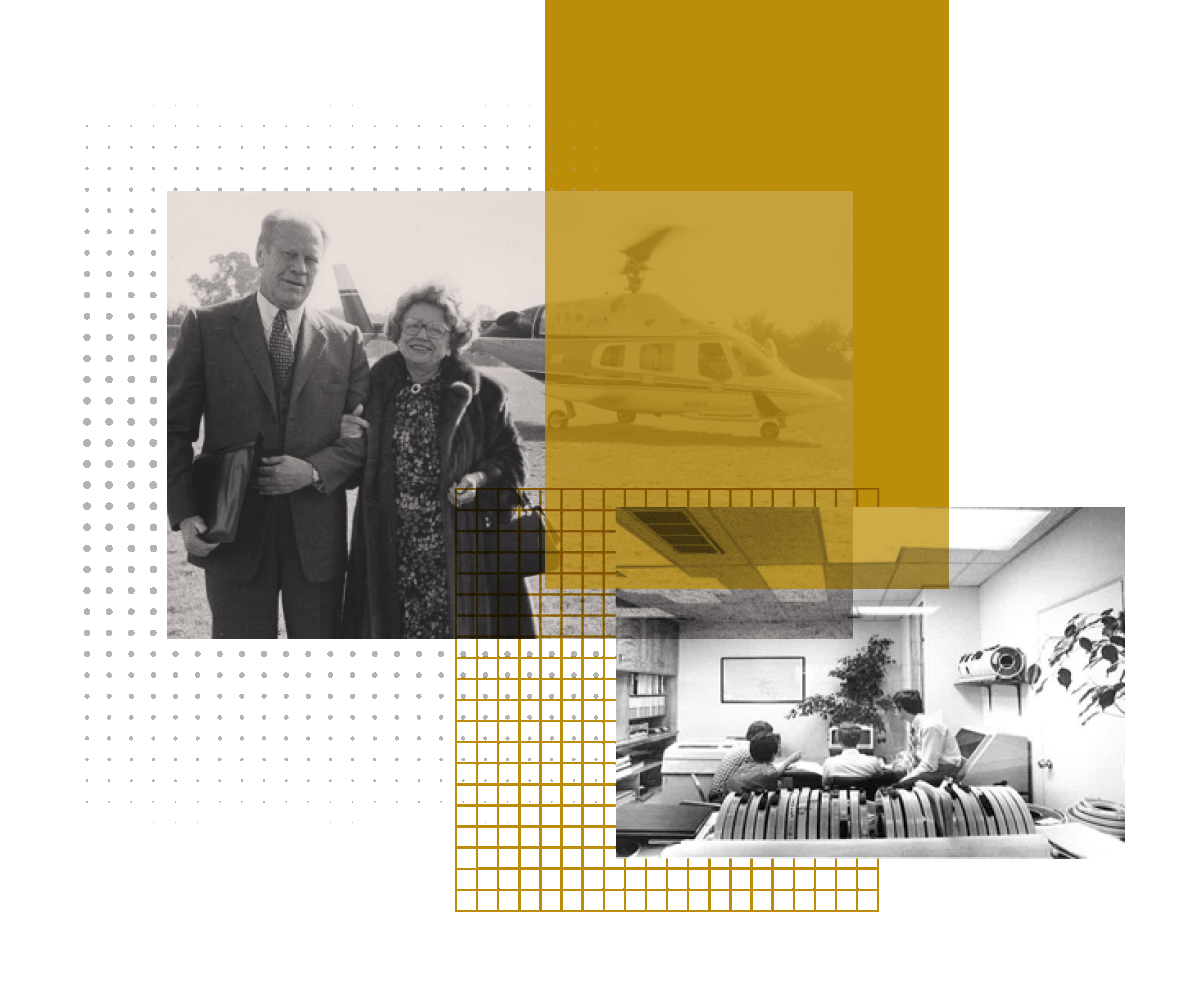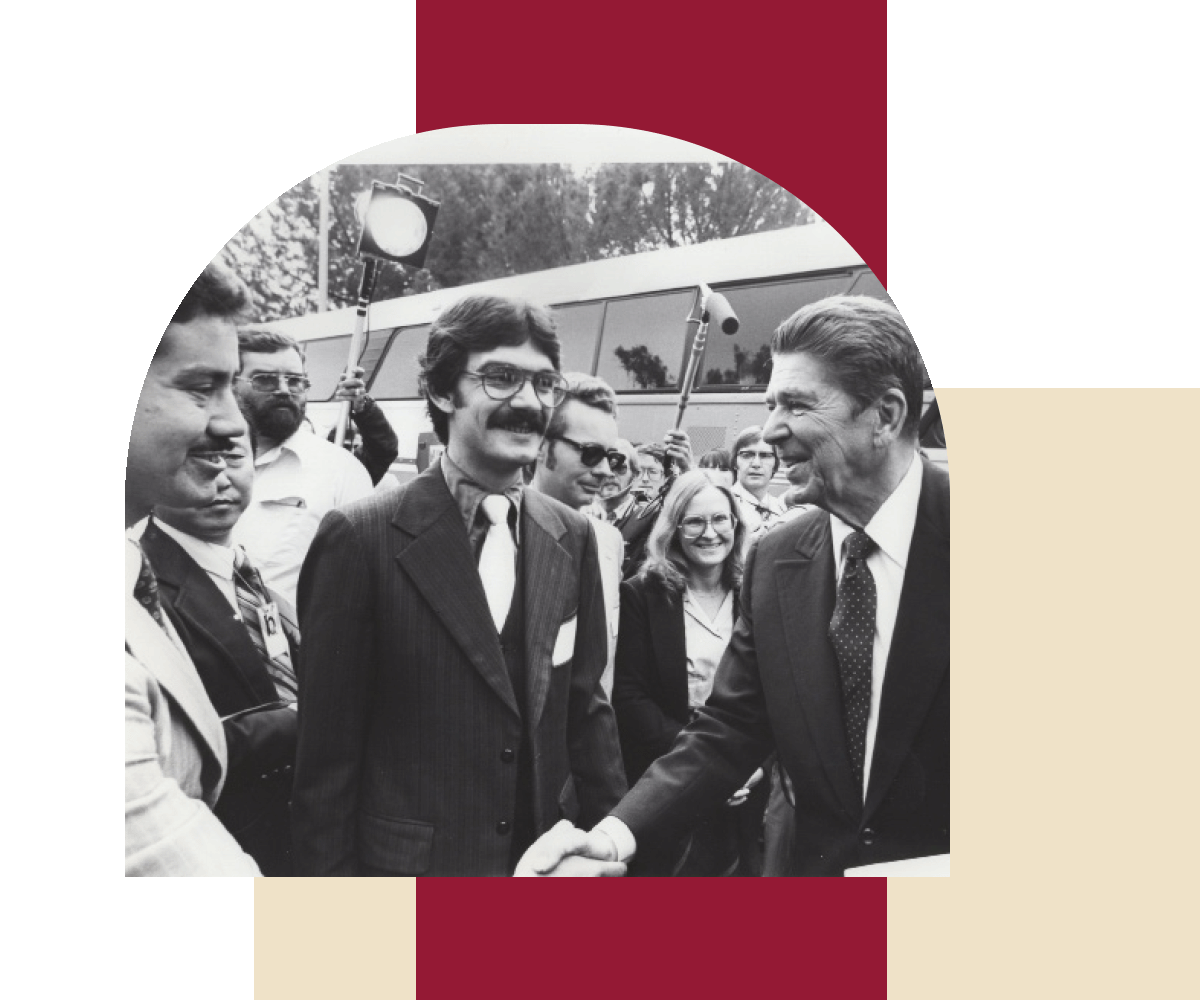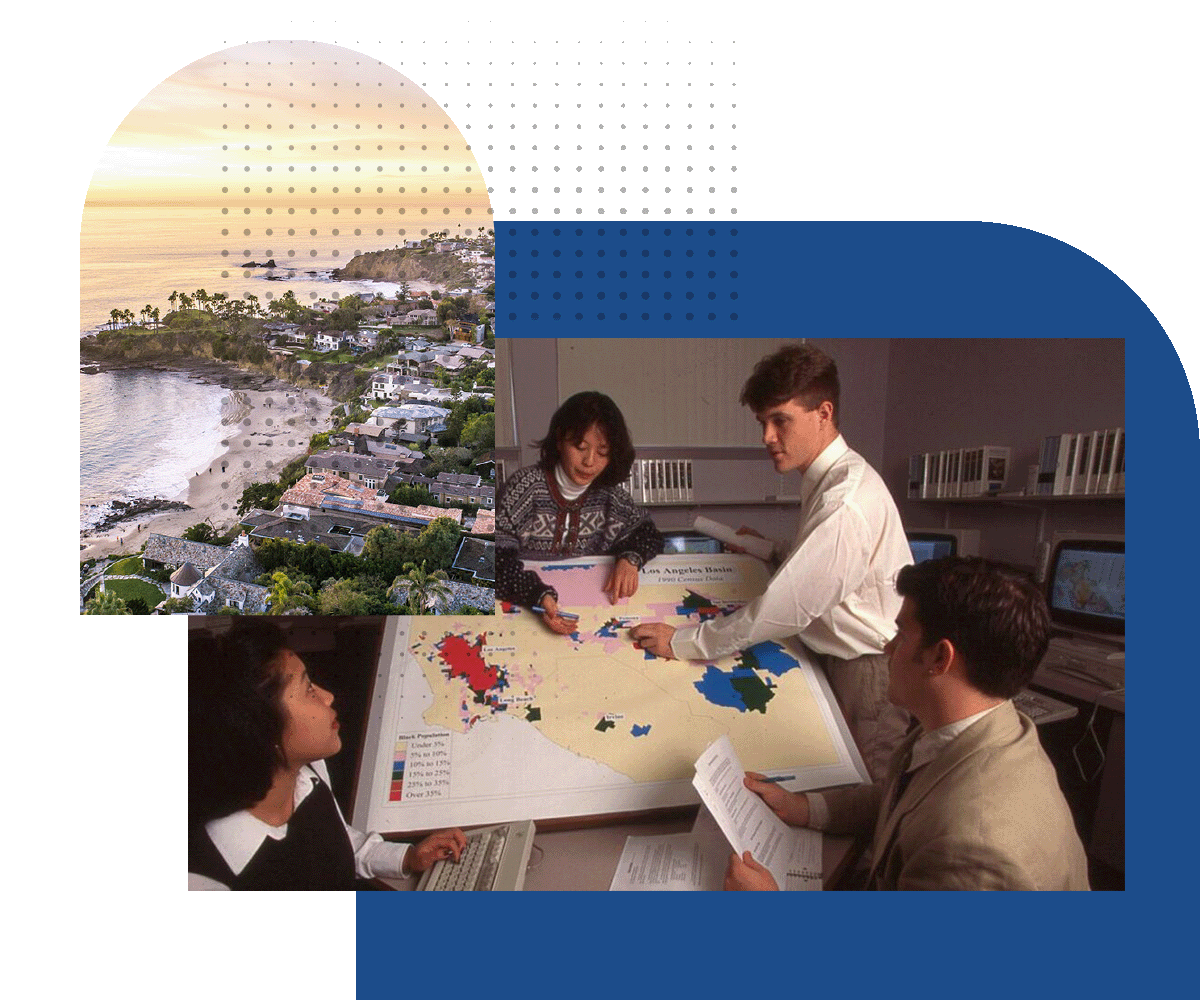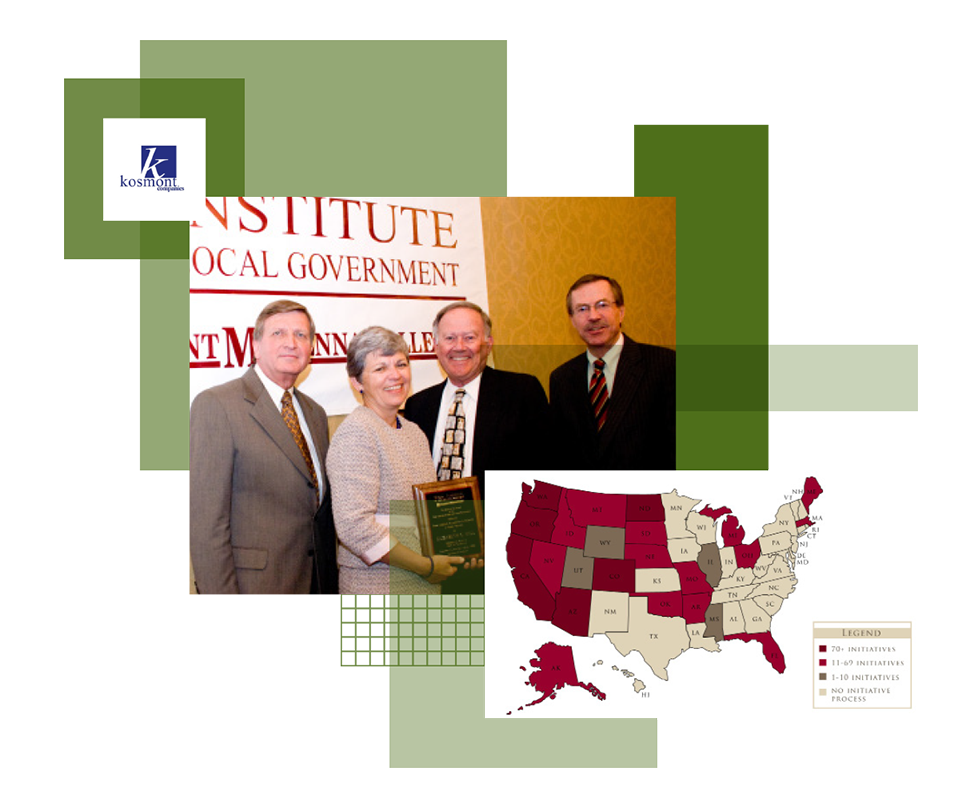The Rose Institute of State and Local Government, located on the campus of Claremont McKenna College, was founded in 1973. An unmatched resource for information on California state and local government, the Institute maintains extensive demographic, economic, and political databases on the Southern California region. Under the direction of nationally recognized faculty and staff, the best and brightest students from CMC play a significant role in researching, interpreting, and presenting data.
Throughout its history, the Institute has produced expert analyses of critical issues facing California and other states, while maintaining a steady focus on the education and development of its student research assistants. Today, more than 400 Rose alumni are using skills they gained in the Rose student workroom in leadership positions in government, business, and the professions.
When the Rose Institute was founded, CMC was developing a model for research institutes that would provide a structure for faculty and students to pursue research in a way common at major universities but not at liberal arts colleges. The Rose Institute became the second of what is now eleven undergraduate research institutes and centers at CMC, a model that remains distinctive in American higher education.
The Institute was named in honor of its founding donor, Edessa Rose. Born in 1903, Mrs. Rose became one of the few women lawyers of her generation. In 1972, she was named the first female trustee of what was then Claremont Men’s College and enthusiastically supported CMC’s effort to create an institute that focused on the study of state and local government.
The founding vision of the Rose Institute was to produce high-quality, objective, data-driven research on challenges facing state and local governments, and to expand opportunities for undergraduates to pursue professional-level policy research in these areas. The Institute has remained true to that vision, even as the focus of its research has evolved. Early on, the Institute established itself as one of the nation’s leading centers of research on redistricting; over time, it diversified into studies of Southern California’s changing demographics, economics, and governance. Most recently, the Institute has pursued projects in areas including voting and elections, public opinion, city governance, housing policy, federalism, and California’s competitiveness. The Institute has also long maintained a Speaker Series that promotes viewpoint diversity and civil discussion of contested policy issues.
Throughout its history, the Rose Institute’s most important product has been its students. Over the past five decades, the Institute has employed and trained more than 450 undergraduates who have gone on to pursue leadership positions in government, business, and the professions.
The Rose Institute through the decades
1970s
1968 Don Hayden Rose and Edessa Rose endows the Don H. and Edessa Rose Chair in State and Local Government.
1970 Alan Heslop is named the first Rose Professor.
1972 Heslop writes a memorandum to CMC President Jack Stark proposing an institute of state and local government at CMC.
1972 Mrs. Edessa Rose, the Rose Institute’s founding donor became CMC’s first female trustee. She was one of the few women lawyers of her generation.
1973 CMC established the Institute of State and Local Government. Alan Heslop is named first director.
1974 Edessa Rose pledges a large gift to endow the Institute, which is named in her honor. The Institute did not receive the Rose gift until 1987 and thus operated for more than a decade without a substantial endowment.
- Rose Institute creates the California Database, the nation's first comprehensive statewide demographic and political database and through this work became a national leader in census tracking and the use of Geographic Information System (GIS) technology.
- Rose Institute assumes responsibility for the California Congressional Recognition Program and the publication of a biennial report, Californians in Congress. The program continues for the next two decades.
1975 The first Council for the Rose Institute (later named the Board of Governors) is formed.
1976 Florence Adams joins the Rose Institute as a research assistant, later to become administrative assistant (1980-1984), assistant director (1984-1996), and associate director (1996-2009).
1979 The California Roundtable and several of its individual member companies provide major funding to support the Institute's redistricting research, reform, and education programs.
- Richard Santillan and Armando Navarro help organize Californios for Fair Representation (CFR) to represent Latino interests in the 1980s redistricting process. CFR works with the Rose Institute to co-sponsor redistricting conferences and uses Rose Institute data and computers to conduct redistricting research and produce maps. Santillan becomes director of the Rose Institute’s Chicano/Hispanic Reapportionment Project.
- Rose Institute completes the first court-approved redistricting of Mississippi.
- Political scientist and redistricting expert Leroy Hardy begins his association with the Rose Institute, and the Institute publishes his Redistricting Bibliography.
- Rose Institute creates the REDIS computerized redistricting system, which will be used for redistricting projects in California and other states, and establishes a mapping department in the basement of CMC’s Bauer Center.
- Rose Institute publishes Reapportionment Commissions by Dr. Fred Balitzer.
- Institute establishes its political internships program in Sacramento, with support from ARCO.
- Rose Institute collaborates with ARCO to run simulations of congressional decision-making at ARCO plants and offices nationwide, coordinated by Robert Walters and James Pinter-Lucke.
1979 President Gerald R. Ford visits CMC and meets Edessa Rose.

1980s
1988 Rose Institute becomes a central redistricting player in California and other states. The Institute issues several publications on the redistricting process and holds two major redistricting conferences, including a two-day conference titled Redistricting: Shaping Government for A Decade, with representatives from 16 states and former President Gerald R. Ford as keynote speaker. The Institute increases professional and student staff to build capacity for redistricting work and attracts extensive media coverage for its redistricting activities.
- Presidential candidate Ronald Reagan visits CMC, hosted by the Rose Institute.
- Rose Institute moves into offices in Adams Hall.
- Dr. Joke Johnson works on city and county redistricting.
1981 Rose Institute critiques the California Legislature’s partisan districting plans and proposes alternatives. In the midst of the controversy, Assembly Speaker Willie Brown quips, “I am negotiating with the Israeli Air Force about visiting Claremont to wipe out the Rose Institute.”
- Robert Walters named Director of Computing and becomes instrumental in managing the Institute’s databases and sophisticated computers (donated by Hewlett-Packard).
- Rose Institute publishes The Political Geography of California by T. Anthony Quinn.
- Rose Institute representatives help draft Proposition 14, a statewide measure that would have removed redistricting authority from the legislature and created a redistricting commission. The measure qualifies for the ballot but is defeated in the 1982 election.
- Edessa Rose passes away at age 78.
1983 Student management system established with Jonathan Applebaum '83 as the first student manager.
- Rose Institute student Henry Olsen ‘83 takes the lead in drawing maps to replace the legislature’s districting plan through a ballot measure called the Sebastiani Initiative. The California Supreme Court blocks the measure from reaching the ballot in Legislature v. Deukmejian (1983).
1984 In collaboration with UC Irvine professor Mark Baldassare, the Rose Institute completes a survey of opinion leaders for the Orange County Transportation Commission, part of an ongoing partnership with Dr. Baldassare.
1986 Rose Institute publishes Carving Up California: A History of Redistricting 1951-1984 by T. Anthony Quinn.
1987 Rose Institute publishes Juvenile Justice Reform: A Model for the States by Professor (and future director) Ralph Rossum, the culmination of a two-year research project supported by a major grant from the U.S. Department of Justice.
- Supported by a grant from the Ford Foundation, the Rose Institute’s Latino Project begins an extensive study of California’s Latino population. This work will include the first statewide public opinion poll of Latinos, a study of Latino voluntary organizations, a study of California’s Latino-run businesses, and the publication of an Atlas of California’s Latino Communities.
1988 Rose Institute conducts its first exploratory studies of the Inland Empire, which later becomes a primary focus of its research.
- Armando Navarro replaces Richard Santillan as director of the Latino Project.
- A Study of California Initiatives 1976-1986 is published.
1989 The Rose Institute hosts two-day-long conferences on redistricting in California, bringing in experts on redistricting from both parties, as well as politicians from across the state and at all levels of government.

1990s
1990 Rose Institute hosts “Time To Draw The Line” conference to consider how to support underrepresented groups in the redistricting process, as well as advocating for redistricting reform. Rose Institute publishes Redistricting Reform: An Action Package as part of its ongoing efforts to promote redistricting reform.
- Alan Heslop and Leroy Hardy advocate for two propositions on the June ballot, 118 and 119, which would have shifted the redistricting process away from the legislature. Both measures are defeated. Heslop also takes a prominent role in promoting Proposition 140 on the November ballot, which succeeds in establishing term limits in California.
- Redistricting work increases at the local level as some cities move from at-large to district elections. Pomona hires the Rose Institute to draw its lines following the enlargement of its city council.
- Brandy Birtcher ’76 becomes chair of the Board of Governors.
1991 Rose Institute remains active in drawing district lines for jurisdictions, including the City of Phoenix, AZ.
- Latino Studies Project hosts Latino Statewide Summit on Education Reform.
- The People of California: An Atlas of California’s Latino Communities is published, the first of several reports focusing on California’s changing demography. Subsequent publications include an atlas of South Central Los Angeles, funded by the Ford Foundation (1992), and atlases of California’s Chinese American (1993), Filipino (1993), and African American (1996) communities.
1993 Steve Frates ’69 becomes a Rose Institute fellow, directing fiscal analysis projects. Under Frates’ supervision, the Institute will conduct fiscal analyses of the City of Los Angeles, Los Angeles County, Orange County, California K-12 school funding, and state funding of county governments, among many other projects.
- Rose Institute publishes Redistricting in the 1980s: A 50-state Survey, edited by Leroy Hardy, Alan Heslop, and George Blair.
1994 Rose Institute receives a major grant for GIS equipment and software.
- Following a lengthy self-study, the Rose Institute Board of Governors approves a new mission statement calling for the Institute to shift its focus to four areas of Southern California (the San Gabriel Valley, the Inland Empire, Orange County, and San Diego) and to train students in the use of demographic analysis, survey research, and fiscal analysis.
1995 Rose Institute releases report: Costs of Government in Orange County, the first major study of government efficiency in Orange County following its 1994 bankruptcy filing.
- Rose Institute updates its survey center with new telephones, headsets, and survey software. Over the next decade, surveys for businesses and local governments will be an important component of the Institute’s work.
1996 The California Constitutional Revision Commission issues final report proposing several state constitutional changes. Jointly appointed by Governor Pete Wilson (a former member of the Rose Institute Board of Governors) and the legislature, the commission includes several Rose Institute-affiliated members, including Alan Heslop, Steve Frates, Joel Fox, George Babikian, and Gary Hunt.
1996-1998 Budget studies conducted for local jurisdictions, including San Diego County Public School Districts; San Diego City, San Diego County; Los Angeles County; and Monterey County.
1997 Marionette Moore joins the Rose Institute as survey manager and administrative assistant, and will later be named administrative coordinator.
- Rose Institute publishes the first issue of The Rose Report, renamed The Rose Review in 2010.
1998 David Huntoon ’65 becomes a Rose Institute fellow, focusing on project development and management.
- Allan Lunsford becomes chair of the Board of Governors.
1999 Rose Institute organizes a conference on transportation policy, the first of several conferences in the next decade focusing on transportation, water, and solid waste issues in Southern California.

2000s
2000 Alan Heslop completes tenure as director. Ralph A. Rossum is named director.
2001 Rose Institute organizes the "Time to Draw the Lines" redistricting conference.
- Douglas Johnson ’92 becomes a Rose Institute fellow. He will assist with research projects and student training in demographic analysis, GIS, and voting rights and redistricting law.
2002 Rose Institute publishes an analysis of Arnold Schwarzenegger's After School Initiative (Proposition 49 of 2002).
- Initial Kosmont-Rose Institute Cost of Doing Business Survey published. The Institute will continue to produce the Kosmont-Rose Institute Survey regularly for more than two decades.
2003 Rose Institute organizes three conferences in 2003-2004 on the theme of Governing California in the Twenty-First Century. The conferences resulted in a 2004 report presenting model reforms to establish an independent redistricting commission, an open primary system, a cap on state spending, and a limited legislature.
2004 Rose Institute provides funding for California Politics class trip to Sacramento and will continue to support the trip in coming years.
2005 Leroy Hardy donates to the Rose Institute his extensive book collection and redistricting archive.
- Richard Burnweit ’72 donates to the Rose Institute a comprehensive biographical database of California legislators and other elected officials, known as the Burnweit Database. The Rose Institute later receives a grant from the John Randolph Haynes Foundation to help organize the database.
- Rose Institute Academy for Civic Engagement hosts conference for city council members, mayors, and city managers, on topics including housing, transportation, government finance, economic development, and water.
2006 Rose Institute is awarded a grant from the Haynes Foundation to establish a California Political History Archive and Database.
2007 Darryl Wold ’63 is elected chair of the Board of Governors.
2008 Rose Report online blog is launched.
- Board member Buzz Woolley ’59 and Girard Foundation sponsor summer partnership with Voice of San Diego. VOSD publishes research produced by a student team led by Ilan Wurman ’09.
- Rose Institute celebrates 35th Anniversary with a gala luncheon in Sacramento. The first Rose Award for Public Service Award is presented to Elizabeth G. Hill (2008). Subsequent awards honor Richard R. Oliphant (2010), Raymond Remy (2012), Kirk West (2014), Jane Pisano (2016), and Zev Yaroslavsky (2019).
2009 Associate Director Florence Adams retires; Professor Ken Miller becomes associate director.
- Rose Institute hosts conference on the 2010 Census and redistricting.
- Miller-Rose Institute Initiative Database is created to provide an online summary of all voter-approved state citizen initiatives in the United States and post-election legal challenges to those measures.
- Rose Institute joins Twitter.

2010s
2010 Rose Institute and the Lowe Institute establish the Inland Empire Center (IEC), with David Huntoon ’65 coordinating programs. IEC forms a partnership with UCLA Anderson Forecast and Citizens Business Bank to host Inland Empire Economic Forecast conferences throughout the decade.
- First issue of the Inland Empire Outlook is published.
- Rose Institute publishes Redistricting in America: A State-by-State Analysis, authored by Douglas Johnson ’92, Ian Johnson ’09, and David Meyer ’12.
- Ralph Rossum completes tenure as director. Andrew E. Busch becomes director, with his term beginning January 1, 2011.
2011 Bipasa Nadon is named assistant director for publications and research.
- Rose Institute moves from Adams Hall to offices in the newly opened Kravis Center.
- The Leroy Hardy Library is dedicated in the new Rose Institute offices.
- Rose Institute creates a new Athenaeum Speaker Series. Rose-sponsored Speakers will include Governors Tom Ridge, Susana Martinez, and Steve Bullock ’88; Representatives Kevin McCarthy, Tom Campbell, and Lois Capps; Assembly Speakers Robert Hertzberg and John Perez; and California Supreme Court Justice Mariano Florentino Cuéllar; as well as other government officials, academics, and journalists from across the political and ideological spectrum.
- Redistricting in America website is created, under the direction of Mike Whatley ’11. It receives widespread media coverage.
2012 Rose Institute presents its first Video Voter Guide, a non-partisan video analysis of California statewide ballot propositions. The Video Voter Guide program will become a prominent Rose Institute project over the next decade, with Bob Stern and Nicolas Heidorn ’06 providing supervision.
2013 Rose Institute receives donation of archive from retired House Rules Committee Chairman David Dreier ’75 and assists with creation of Dreier Roundtable at CMC.
- Board of Governors establishes Rose Institute Alumni Society and names Jacinth Sohi ’11 president of the society.
2014 Senior Fellow David Huntoon passes away. In his absence, the Institute is required to develop a model that relies less heavily on contract projects.
2015 The new hire training program is formalized, with Jessica Jin ’16 as the first new hire manager.
2016 Rose Institute publishes a series of reports on the criminal justice system as part of a research program supervised by CMC Professor Joseph Bessette and APU Professor Jennifer Walsh.
- Rose Institute teams supervised by Andrew Busch begin producing reports on federalism. Reports will assess the balance between federal and state powers in the areas including public education, marijuana legalization, immigration, and, later, the response to the Covid 19 pandemic.
- Rose Institute publishes study on the “quiet revolution” of California city governments’ transition to district-based elections in response to the California Voting Rights Act.
2017 Protestors block access to Rose Institute-sponsored Athenaeum talk by Heather MacDonald. Director Busch issues a statement defending academic freedom and
free speech.
- Ray Remy ’59 is elected chair of the Board of Governors.
2019 Grace Moe donates publications, research papers, and lecture notes of Ronald Moe ’59.
- Board of Governors Chair Ray Remy passes away at age 82. Ryder Todd Smith becomes acting chair and is elected chair in 2021.

2020s
2020-2021 Pandemic forces the Rose Institute to operate remotely for 17 months.
2020 CMC-Rose Institute polling program established under the leadership of Professor Andrew Sinclair ’08.
2021 Andrew Busch completes tenure as director. Kenneth P. Miller is named director and Don H. and Edessa Rose Professor of State and Local Government.
- Rose Institute forms new Board of Faculty Advisors consisting of Professors Andrew Busch, Michael Fortner, Emily Pears ’08, Shanna Rose, and Andrew Sinclair ’08.
2022 First CMC-Rose Institute national poll conducted in collaboration with YouGov. Poll produces two reports, Red States vs. Blue States and Battleground Pennsylvania.
- Rose Institute redesigns the Kosmont-Rose Institute Survey and includes data on business migration out of California.
2023 Housing policy conference co-hosted with The Olson Company, featuring former Governor Gray Davis, state lawmakers, and local officials.
- Survey commissioned by the California City Management Foundation (CCMF) produces the first comprehensive profile of California’s city managers.
- Rose Institute publishes report commissioned by TogetherSF outlining potential structural reforms to San Francisco government. Nicolas Heidorn ’06 leads work on the report, and Abhi Nemani ’10 joins the team to continue analysis of potential reforms.
- Todd Stevens P’18 P’24 P’26 donates historical maps of California to CMC, and several are displayed at the Rose Institute.

The Rose Institute has had four directors in its 50-year history: the founding director, Alan Heslop (1973-2001); Ralph Rossum (2000-2010); Andrew Busch (2011-2021), and Ken Miller (2021-present).
Miller also currently holds CMC’s Don H. and Edessa Rose Chair in State and Local Government. Several long-time staff members have made essential contributions to the Institute’s success, including former Associate Director Florence Adams (1996-2009), Administrative Coordinator Marionette Moore (1997-present), and Assistant Director Bipasa Nadon (2010-present).
The following are alumni stories about their experiences in participating in the Rose Institute. What they loved about the Rose Institute, favorite project, or fondest memories.
Letter from the Director
A letter from the current Rose Institute director, Ken Miller.
50th Anniversary Overview
View more information on the Rose Institute's key milestones, alumni profile, and supporters.

